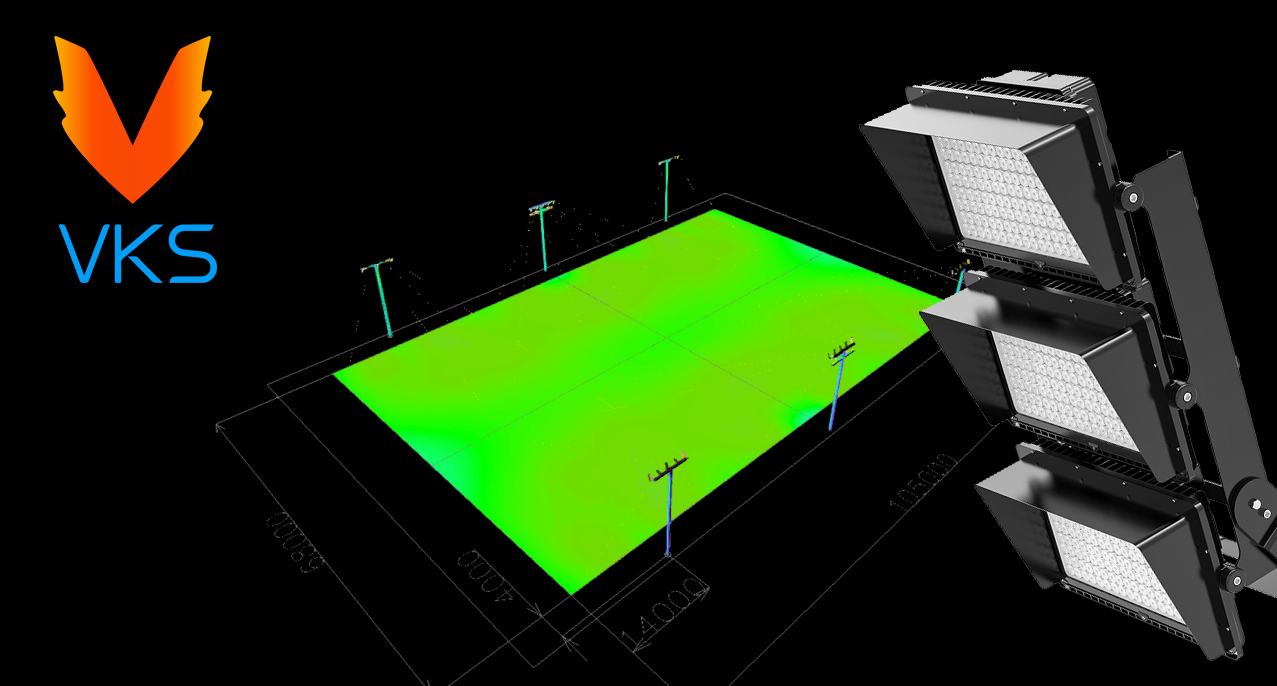One of the many lighting questions we get asked at VKS is whether or not we can guarantee the level of lighting that a particular system will produce. The short answer is “yes”. In this article, we will explain why and how sports clubs can benefit.
What is the meaning of lighting levels?
Lighting levels refer to the amount and quality of light in a particular area. This could be a room or office, stadium or other type of environment. Lighting levels are crucial because they allow us to measure the quality and quantity of light in any given area. This helps us understand factors such as uniformity and visibility.
Lighting levels are usually expressed and measured in “lux”. Technically, the lux measure is lumens per sq m. However, this level of detail may not be necessary for most situations. The easiest way to understand lux is that it measures the amount light that falls onto a surface.
The higher the lux value, the brighter the area and the greater the amount of light.
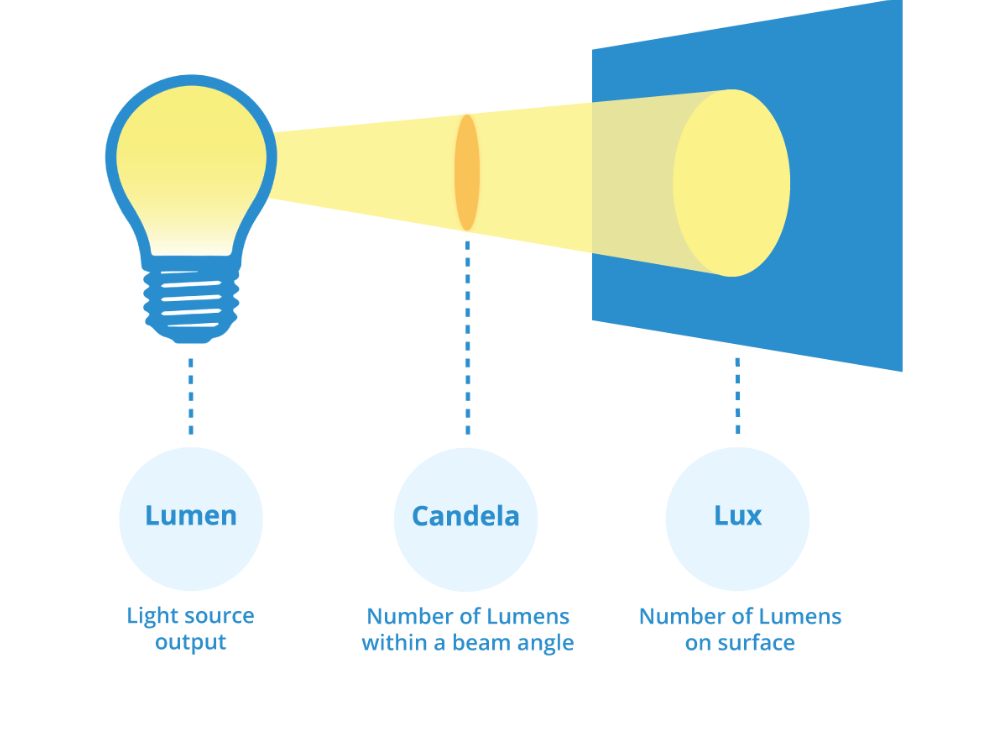
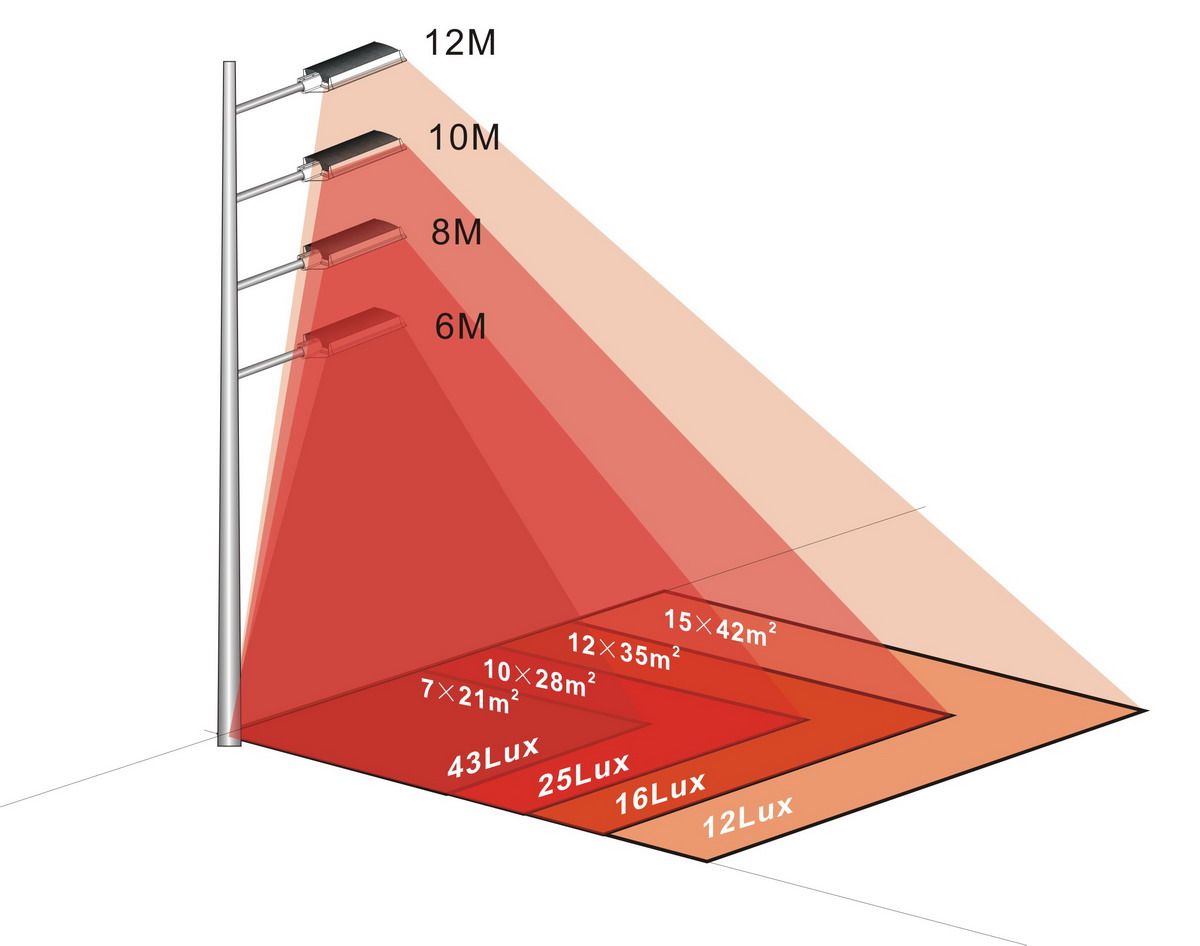
Is it necessary for lighting levels to differ in various environments?
Yes. Lux values can be either too high or too low in a space. A well-designed lighting solution will always consider the nature of the environment being illuminated and match the level of illumination to the requirements of that space.
The optimal lighting levels vary from one location to another. For example, while a residential space can be lit with 150-300 lux, a retail shop will typically require a level between 500 and 1000 lux. In a scientific or manufacturing environment, higher levels may be required for specialist tasks.
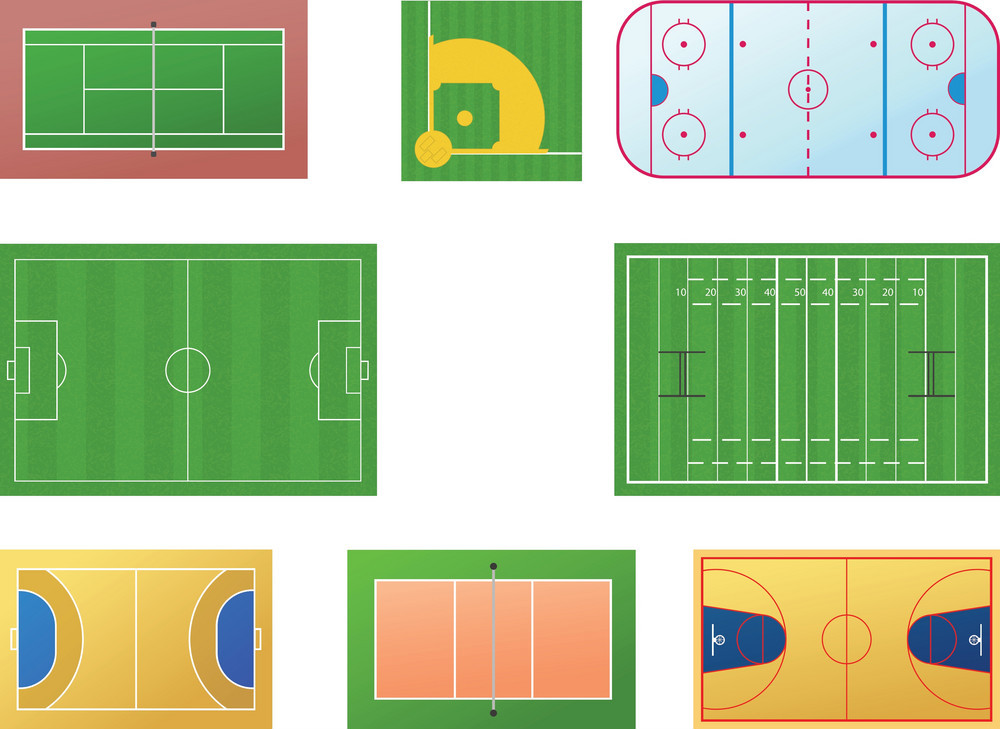
There are many factors that determine the level of light appropriate for any given space. Some of the most significant include:
* What activities or tasks will the space be used for?
* Layout and architecture.
* Environmental Conditions
* Sustainability or energy efficiency requirements.
* Standards or regulations.
This last one is especially important for sports. Most governing bodies specify the exact lighting requirements at various levels of competition.
Why is it important to have the right lighting levels in Sport?
Lighting is a crucial part of modern sports. It can enhance everything from the experience for fans to the safety of players. Of course, not every sporting event is the same. The difference between a five-a-side local match and the World Cup Final is enormous. Most sporting bodies provide recommendations and requirements for lighting that are tailored specifically to the different levels of play.
These are often aligned with standards that have already been defined. In UK athletics for example, the lighting levels are determined alongside three different levels of competition. Lighting systems for venues that host only local events should not exceed 100 lux. Stadiums that welcome international competitors, however, will need lights that are capable of producing 500 lux or more.
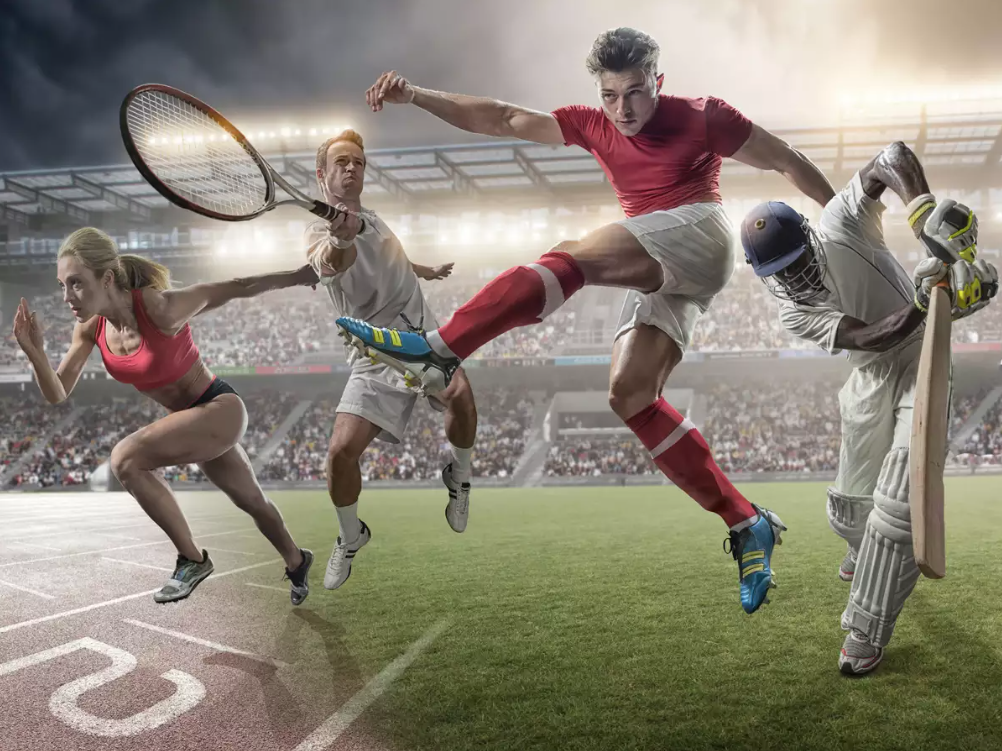
The following are some of the reasons why higher-level locations need higher levels of lighting:
Performance High-level sports require speed, accuracy and rapid decision making. A good lighting will allow athletes to perform at their best.
Safety Better lighting improves visibility and helps to minimise accidents and injuries. This is true for all levels of play, but especially at the professional level when playing can be faster.
Visibility The more prestigious an event is, the bigger the venue will be. Good lighting is important because fans may be sitting further away at higher-tier venues.
Broadcasting When an event is broadcasted or streamed live, the cameras that capture the action must be lit at a specific level to work effectively.
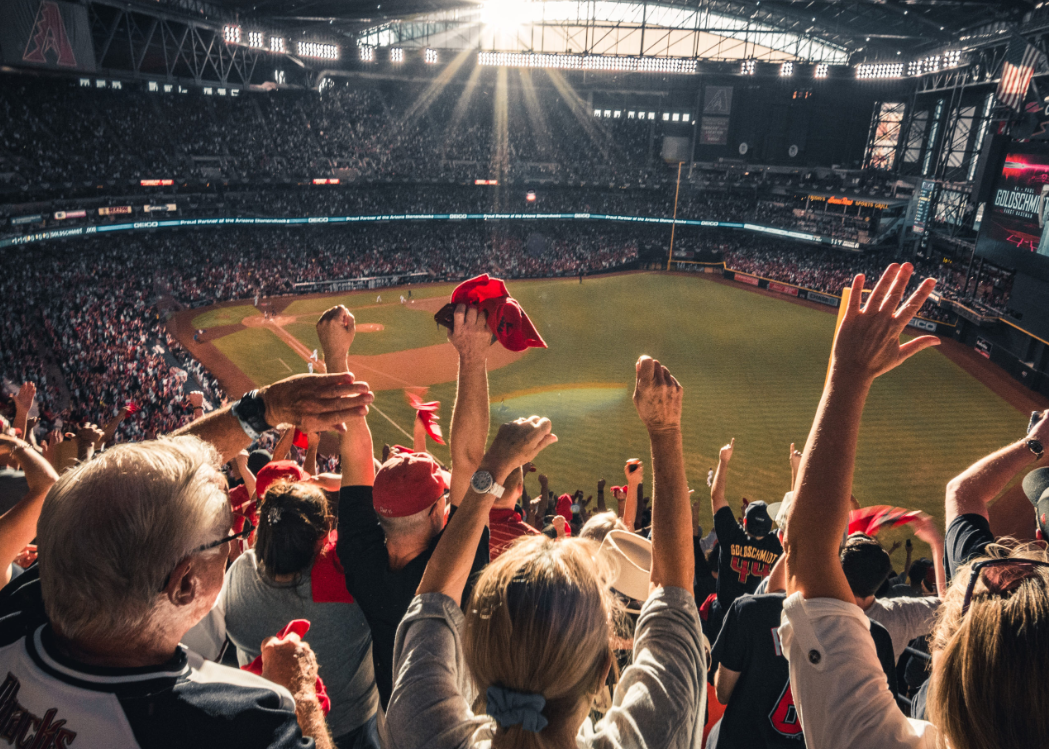
What is the minimum lighting requirement for my venue?
The specific requirements for each sport, location, and level can differ significantly. Your local or regional governing bodies will usually provide comprehensive information on lighting levels. This guidance is not always separate but can often be found in a larger document about the health and safety regulations for stadiums and other venues.
Is the level of lighting a recommendation?
This can also vary. Some sporting authorities will simply offer advice while others may make certain levels a requirement. Most governing bodies tend to be more strict with the minimum requirements.
In UK, the Football Association (FA), for example, states that “clubs who wish to compete in FA Competitions and the National League System, must achieve the necessary standard relevant to level of competition.”
The FA’s requirements are relatively straightforward. The FA specifies seven “ground grades” with different lighting levels, but the only real variation occurs at the top. The lighting standards for Grades B to G must be 180 lux on average (or 120 lux if you are using existing systems) while the lighting requirements for Grade A, Conference-level grounds, is 250 lux.
Can you guarantee the lighting level?
Yes. According to the FA’s requirements, any lighting company should be able provide you with proof of the work that they have done.
It is possible because of the scientific principles used in the design of lighting solutions. Designers can calculate lighting levels with high accuracy based on how many floodlights are used and their output. It is possible to ensure that the solution meets all requirements before it’s installed.
Independent verification bodies can confirm the lighting levels when required.
How can I ensure my lighting level?
It is best to choose a lighting supplier that has been accredited or endorsed as a provider by the governing body for your sport. You can be sure that the company you choose has been approved and vetted by the organization that specifies the regulations.
At-a-glance
* Lighting levels are used as a way to determine the amount and quality of lighting in a specific space.
* The lighting levels in different places can differ significantly. For example, a specialist industrial environment will require a higher level of lighting than a residential building.
* It is crucial to achieve the correct lighting for any space, especially in sports where the lighting can have a significant impact on everything from safety and performance through to fan experience and broadcast coverage.
* Many sport governing bodies require that clubs and venues meet certain lighting levels depending on the level of play.
* Lighting providers should be able guarantee lighting levels in their lighting solution design.
* By working with approved providers, you can achieve compliance as well as uncover funding opportunities.
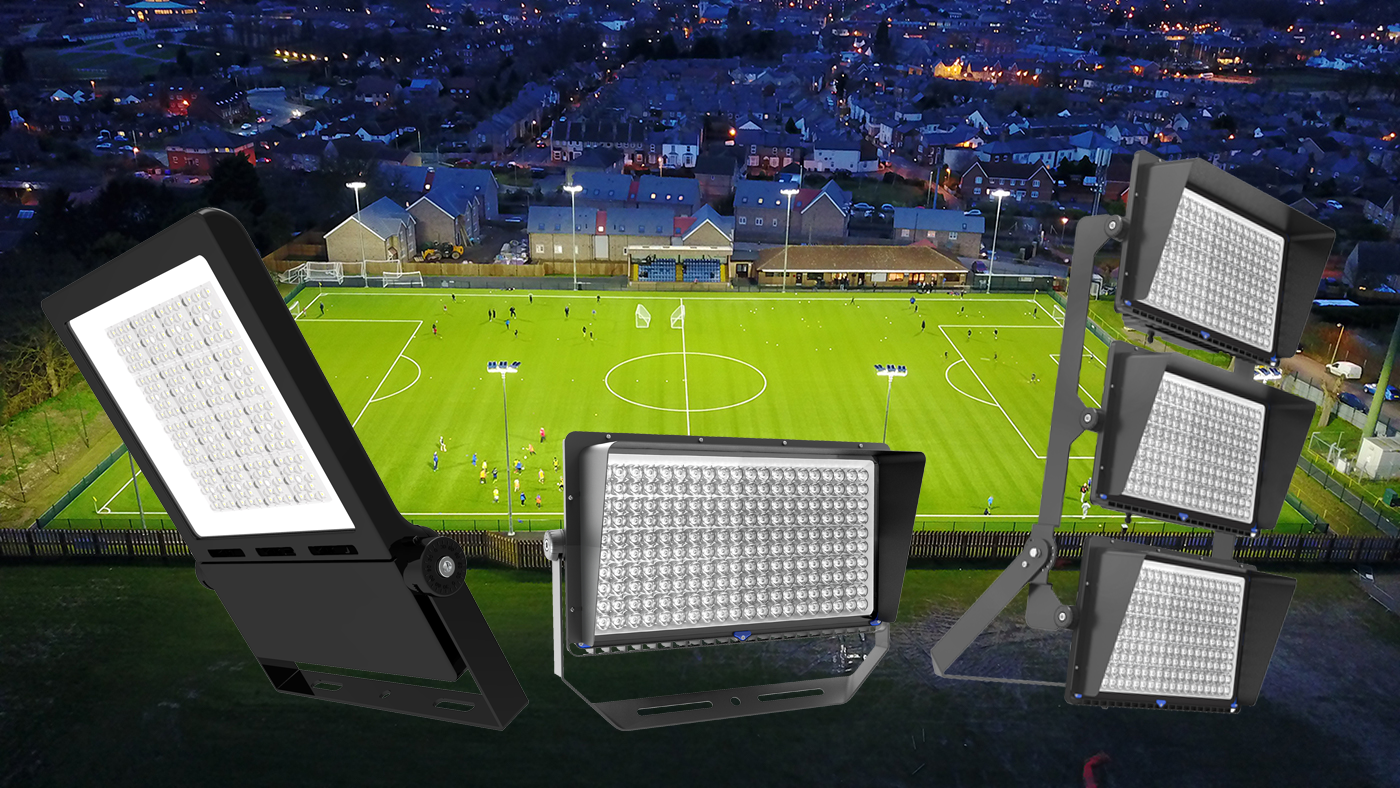
Post time: Jul-14-2023

